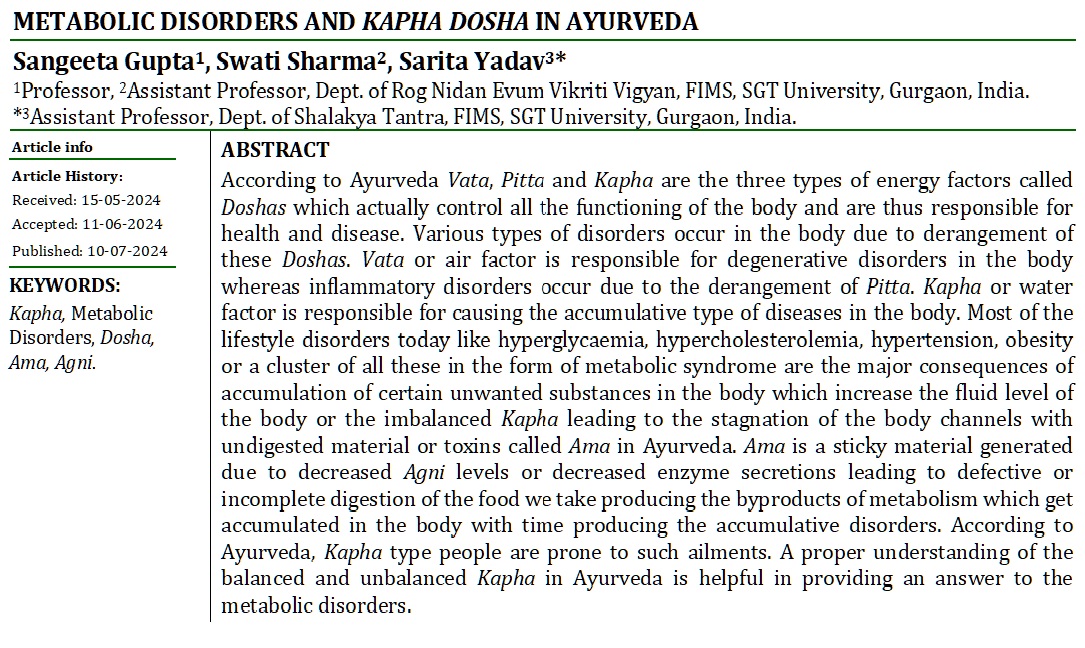Metabolic Disorders and Kapha Dosha in Ayurveda
Abstract
According to Ayurveda Vata, Pitta and Kapha are the three types of energy factors called Doshas which actually control all the functioning of the body and are thus responsible for health and disease. Various types of disorders occur in the body due to derangement of these Doshas. Vata or air factor is responsible for degenerative disorders in the body whereas inflammatory disorders occur due to the derangement of Pitta. Kapha or water factor is responsible for causing the accumulative type of diseases in the body. Most of the lifestyle disorders today like hyperglycaemia, hypercholesterolemia, hypertension, obesity or a cluster of all these in the form of metabolic syndrome are the major consequences of accumulation of certain unwanted substances in the body which increase the fluid level of the body or the imbalanced Kapha leading to the stagnation of the body channels with undigested material or toxins called Ama in Ayurveda. Ama is a sticky material generated due to decreased Agni levels or decreased enzyme secretions leading to defective or incomplete digestion of the food we take producing the byproducts of metabolism which get accumulated in the body with time producing the accumulative disorders. According to Ayurveda, Kapha type people are prone to such ailments. A proper understanding of the balanced and unbalanced Kapha in Ayurveda is helpful in providing an answer to the metabolic disorders.
Downloads

Copyright (c) 2024 International Journal of Ayurveda and Pharma Research

This work is licensed under a Creative Commons Attribution-NonCommercial-ShareAlike 4.0 International License.






